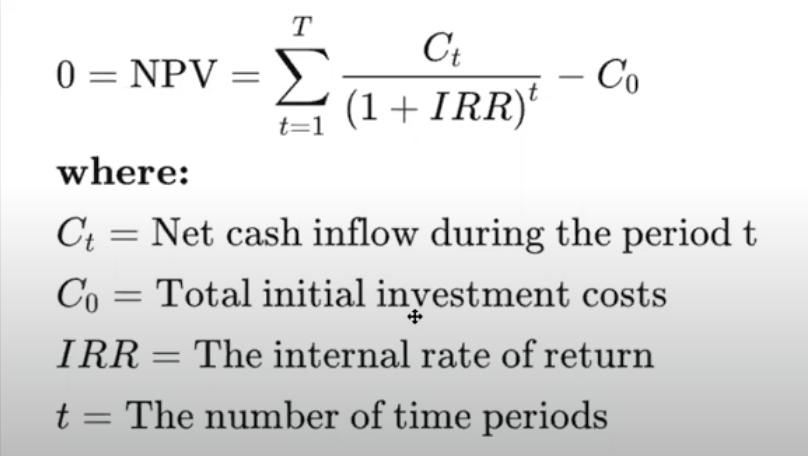What Passive Investors Need To Know About IRR
As a new passive investor or someone interested in becoming one, you’re likely hitting a steep learning curve.
There are many terms, deal structures, and markets to learn about before investing in your first real estate syndication deal.
Among other terms, there is cap rate, capital stack, NOI, ROI, and now IRR that you want to understand before diving in.
You aren’t alone if you prefer to feel fully informed and confident in your education about a specific topic before investing a ton of money into it.
In this article, you’re going to learn:
- What IRR is
- How it’s different from ROI
- How to calculate the IRR when looking at a deal
- Why you should even care about the IRR
Passive Real Estate Investing Myths
First, let’s debunk a couple of myths about real estate syndications. Most would-be syndication investors get stuck on the sidelines simply because they believe these myths:
Myth #1: Lower Control
Some people think when you invest in a real estate syndication, you have lower control over the investment asset, and thus reap lower returns. However, as with any passive investment, you exercise your control while reviewing the executive summary and selecting an opportunity that supports your investment goals. Then, you get to sit back and enjoy the passive income.
Myth #2: Lower Return
People often believe that you’ll have lower returns with syndication. Active investors are generally the primary owner and property manager. They’re responsible for all gains and liable for losses too. Meanwhile, with passive investing, you’re able to enjoy all the upsides of being invested in real estate like:
- Tax benefits
- Distributions
- Community improvement
- Appreciation while also limiting your liability and maintaining your time freedom
If you compare IRR across real estate opportunities, this metric can really help illuminate the best deal.
Why Do Passive Investors Need IRR and How Does It Help?
Now you’re dying to know what the IRR even is and how you’d calculate it, right?
IRR (internal rate of return) is the standard metric used to compare the return on your investment with the length of time included in the calculation.
In contrast, ROI (return on investment) calculations don’t consider how long it will take to collect your returns.
So, if you could invest $100K and earn $300K, is that a good deal?
Before you react, there are a few things to consider. Mainly, the time it would take to collect that $300K should be taken into account. If it took ten years to achieve those returns, I think you’d be less excited than if you could earn those returns in only five years.
The other question is, what return is being reflected by that $300K? Is that overall ROI, or annualized ROI? The shorter the hold period, the higher the annualized ROI while the overall ROI wouldn’t change. So, you’ve got to know what’s being calculated and what factors are being taken into account.
Now, if you’re trying to choose between a five-year value-add opportunity and a seven-year syndication deal, the ROI isn’t very helpful.
This is where you need the IRR – so you can include the length of time your capital is invested and accurately compare the returns you might earn.
Keeping It as Simple as Possible
It would be confusing to compare different deals of varying lengths, classes, and types without a clear IRR on each deal. And just in case you’re just dying to relive algebra, here’s the formula:

Don’t worry, though; you don’t have to calculate it yourself unless you want to. Here at FreedomInvesting.com, we like simplicity.
So, we provide IRR along with a chart of other variables. This helps you clearly see how the IRR may be affected in the financial section of each deal’s investment summary.
Here are some fun facts: The IRR is negative until your returns equal the amount of capital you’ve invested — then it’s 0%. After that, when your returns surpass the amount of your initial investment, the percentage starts to grow positively.
The more monthly distributions paid to investors in a shorter timeframe, the faster IRR turns positive. This is why monthly distributions and early sales are popular — they make the IRR skyrocket.
Wouldn’t you love to double your money in three years instead of five? I would!
What Variables Impact the IRR?
You may notice an easy-to-find IRR printed in the executive summary, but keep in mind that it’s likely based on the entrance cap rate.
The IRR moves as the cap rate moves. This is why we suggest you find the financial section of the investment summary. In the sensitivity analysis, you should see a chart similar to that below, where a varying cap rate, among other factors, reflects an adjusting IRR.

The asset class and strategy also intensely affect the expected IRR on any syndication investment.
A stabilized A-class apartment syndication may have a 7-year term with no refinance opportunity and an IRR between 13%-15%. In contrast, a B-class value-add multifamily syndication may reflect a 5-year business plan, refi opportunity, and forced appreciation from the renovations that push IRR up into the 14%-17% range.
Although these are both apartment complexes, possibly even in the same metropolitan area, you’re comparing two different appreciation strategies and two different classes.
Adding streams of income to the property, increasing operational efficiencies, and getting units to market rents are all ways underwriting can affect IRR.
Things like laundry services, mail delivery lockboxes, new property management, and payment software for tenants could drastically improve the experience for tenants and support higher rent rates.
If per unit and overall property upgrades with generally low cost will increase demand and raise the rental rates, the NOI (net operating income) will get a bump and positively impact the IRR.
What Else To Look for When Comparing Syndication Opportunities
Beyond fancy metrics with three-letter acronyms, you should examine each prospective deal for its alignment with your strategy.
Consider the types of syndications you’re interested in – multifamily, mobile home parks, developmental, self-storage, etc.
Each varying asset type, class, and market boasts different metrics. Weigh whether the market exhibits high growth trends in favor of increased occupancy and rent rates and decide if you’re comfortable having your investment capital locked in for three, five, or seven years.
Another significant factor is, of course, the operator. Do you agree with their philosophy and the way they run their business? Do you know, love, and trust them?
Here at FreedomInvesting.com, our philosophy includes capital preservation first, followed by monthly distributions, and then appreciation.
Therefore, we specifically seek out investment opportunities with these goals in mind.
Other deal metrics to investigate and compare include:
- The breakeven occupancy rate
- Expense ratio
- The deal structure
- Loan or debt details
In general, if the breakeven occupancy rate and expense ratio are low, the projections are more likely to be achieved.
Deal structures can vary between a wide array of preferred return percentages and splits for distributions. Loans on the property can reflect a wide range of rates, terms, and other options.
As always, your selection should be in line with your values and investment goals, plus within your risk tolerance.

